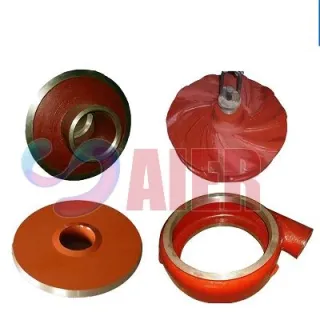Samh . 30, 2024 18:22 Back to list
Industrial Submersible Pumps for Versatile Applications in Various Industries and Environments
Industrial Vertical Sump Pumps An Overview
Industrial vertical sump pumps are essential components in various industrial applications, designed specifically for handling liquids in harsh environments. These pumps are uniquely engineered to manage liquids from sumps, pits, or other low-lying areas, which makes them invaluable in settings prone to flooding or liquid accumulation. Their design allows them to operate effectively while submerged, making them ideal for several applications, from wastewater management to cooling systems in power plants.
Structure and Design
The primary characteristic of a vertical sump pump is its upright design. Unlike horizontal pumps, vertical sump pumps are mounted above the liquid level and have a long shaft that extends into the sump. The pump's impeller and volute casing are submerged in the liquid, allowing for efficient operation. The pump's materials are carefully selected to withstand corrosive substances and abrasive particles commonly found in industrial liquids. For example, stainless steel, cast iron, or specialized alloys may be used to enhance durability.
Additionally, the vertical design offers several advantages over horizontal configurations. It occupies less floor space, which can be crucial in tight industrial environments. Furthermore, vertical sump pumps are less prone to cavitation because of their high suction capability, which allows them to draw liquids from deep sump levels effectively.
Applications
Vertical sump pumps are widely used in various industries. They play a critical role in
1. Wastewater Treatment These pumps are central to moving wastewater from treatment facilities and ensuring effective liquid management in municipal systems.
2. Mining Operations In mining, vertical sump pumps are utilized to remove excess water from mine shafts and to manage water infiltration, making them crucial for safe and effective mining operations.
industrial vertical sump pump

3. Construction Sites During construction, large amounts of water can accumulate in excavated areas. Vertical sump pumps are deployed to manage this water, preventing delays and ensuring safety.
4. Power Generation In power plants, particularly those utilizing steam turbines, vertical sump pumps help circulate cooling water, thus aiding in temperature regulation.
5. Chemical Processing In chemical production facilities, these pumps can handle various fluids, including slurries and viscous liquids, making them integral to process reliability.
Maintenance and Efficiency
Like all industrial equipment, vertical sump pumps require regular maintenance to ensure optimal performance and longevity. Maintenance tasks may include inspecting the pump for wear and tear, lubricating moving parts, and checking for any signs of corrosion or damage. Proper maintenance not only prolongs the life of the pump but also enhances its efficiency, which is crucial for minimizing operating costs.
Efficiency is another significant consideration when selecting a vertical sump pump. Ensuring the pump is properly sized for its application can lead to considerable energy savings. An appropriately sized pump will operate within its optimal range, reducing the risk of energy waste and premature wear.
Conclusion
In conclusion, industrial vertical sump pumps are vital for effective liquid management across various applications. Their unique design allows for efficient operation in challenging environments, making them indispensable in modern industrial practices. As industries evolve and the demand for efficient fluid handling grows, the importance of these pumps is likely to increase. Understanding their functionality, maintenance needs, and applications can help industries make informed decisions that enhance operational efficiency and safety. Ultimately, the role of vertical sump pumps in industrial settings is crucial, paving the way for effective solutions to complex fluid management challenges.
-
Wholesale Slurry Pump Closed Impeller Supplier High Efficiency China Slurry Pump Closed Impeller
NewsJul.06,2025
-
High Quality Warman Slurry Pump Drawings Supplier & Factory Reliable Customization
NewsJul.06,2025
-
China SP Slurry Pump Supplier – Vertical Sump Pump Rubber Lined Manufacturer & Factory
NewsJul.05,2025
-
High Quality Submersible Slurry Pump with Agitator Manufacturer & Factory Reliable Submersible Pump Solutions
NewsJul.05,2025
-
Cheap Dredge Pump for Sale – China Cheap Submersible Pump for Wastewater Supplier
NewsJul.05,2025
-
Wholesale Casting Dredge Pump Part - High Quality China Manufacturers & Suppliers
NewsJul.04,2025
